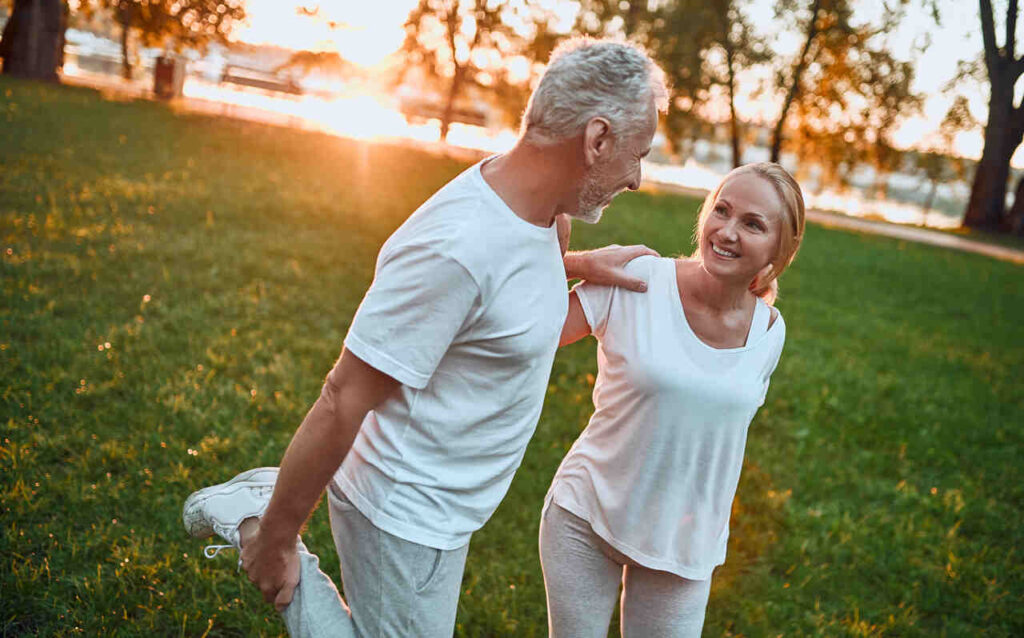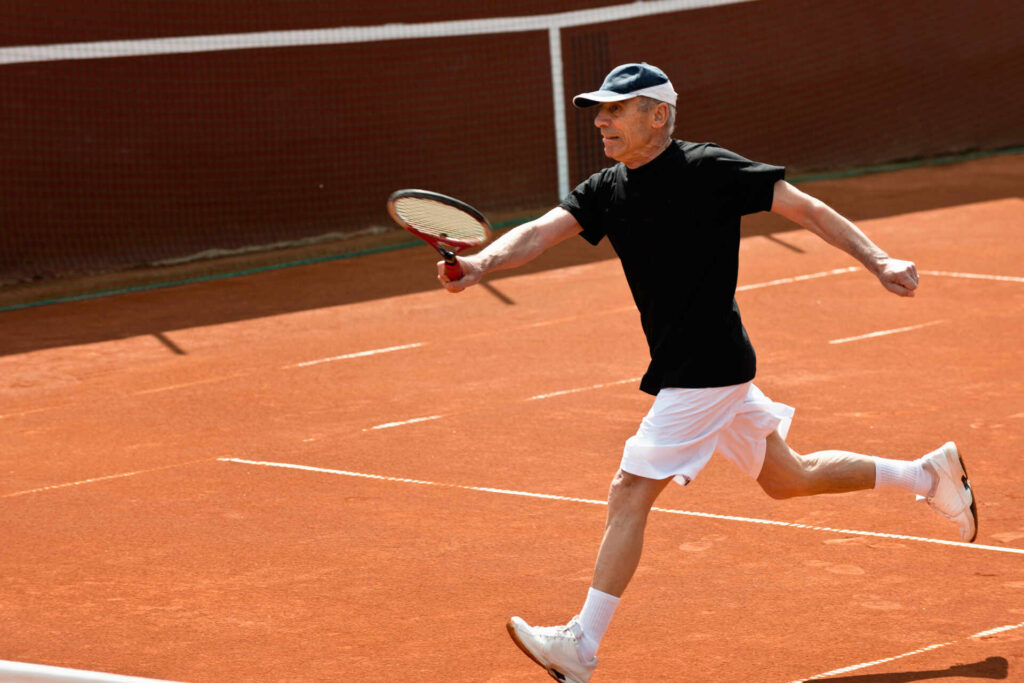Written by Kate Thompson, Physiotherapist
What Are Some Common Myths About Osteoarthritis?
Although a very common diagnosis, there seem to be many misconceptions about what Osteoarthritis is or what may affect it. Let’s dive into some of these together!
Myth #1: I Heard That Running Gives You OA
“I enjoy running for exercise. I don’t think I have Osteoarthritis, but I have heard that continuing to run long distances can put me at risk for developing Osteoarthritis.”
What the research says: Research has shown that both non-runners and runners exposed to high-volume training loads (>92 km/week) have higher rates of Osteoarthritis than recreational runners [1]. Therefore, due to the numerous other health benefits of running, it is not sound advice to tell recreational runners to stop running [1,2].
It is important to consider that these studies do not account for other risk factors of Osteoarthritis, such as age, previous trauma and obesity, which may have had an effect on the results of these studies.
Myth #2: Running Will Worsen My OA.
“I have Osteoarthritis and have been told that I should stop running, as it will make my Osteoarthritis worse.”

What the research says: There have been a variety of studies that have found that running does not appear to accelerate the progression of existing knee OA in runners >50 years of age [1]. There have however been some small-scale studies that have suggested that individuals with OA who run may require increased recovery time from running [1].
Therefore, it is recommended that if an individual has OA, enjoys running, and is managing their symptoms well, they should continue to run as long as they monitor running frequency to ensure adequate recovery time between bouts [1]. For example, if you run 3 days/week, I would recommend spreading the runs out throughout the week instead of running 3 days consecutively.
Myth #3: I Have OA so I Can’t Do Anything Fun Anymore.
“I have been diagnosed with Osteoarthritis and have been told to stick to ‘low-impact’ activities. I want to continue to play hockey for as long as I can but I am nervous that it will make my OA worse.”
 What the research says: There have been multiple studies to suggest that long-term participation in high-impact activities are not associated with the development of OA [2,3]. That being said, these studies are limited, as it is challenging to control for other risk factors of Osteoarthritis. Thus, it may be more productive to make these decisions based on your current symptoms.
What the research says: There have been multiple studies to suggest that long-term participation in high-impact activities are not associated with the development of OA [2,3]. That being said, these studies are limited, as it is challenging to control for other risk factors of Osteoarthritis. Thus, it may be more productive to make these decisions based on your current symptoms.
For example, if you experience a mild increase in pain while playing hockey, however, the pain returns to your baseline by the next day, it is likely safe for you to continue playing. On the contrary, if playing hockey increases your pain significantly after playing and takes 2-3 days to return to baseline levels, I would recommend discontinuing until you have a thorough assessment from a physiotherapist in Calgary.
The physiotherapist will be able to tell you if playing hockey is a realistic goal, and if it is, they can help you make activity modifications and provide you with exercises to help you return to hockey with fewer symptoms! If it is not a realistic goal for you, they will help you find other ways to stay active in a way that fits with your lifestyle and your goals.
Myth #4: I Have OA in My Back so I Can’t Twist.
“I have Osteoarthritis in my spine. I was told I should avoid bending forward or twisting.”
What the research says: What you do with your spine is not as important as how you do it. Your spine is made to twist and bend, however, over time some of these movements can become stiff and painful.
Gentle mobility exercises and performing movements that load your spine such as squats, hinges, pushes and pulls can make your spine more resilient and allow you to complete your daily activities with less irritation and risk of injury.
Myth #5: There Is a One Size Fits All Plan for OA
“I heard that there is one specific exercise program that you can do that will help you manage Osteoarthritis symptoms.”
What the research says: Exercise is a leading treatment approach for Osteoarthritis, however, there is no ‘one size fits all’ formula to exercising with Osteoarthritis [4]. A great place to start is learning how to squat, hinge, lunge, push and pull with good technique, as these are movements that occur naturally throughout the day as you complete daily activities.
For example, you have to squat to sit on a chair, lunge to get up the stairs, and hinge to unload your dishwasher. Factors such as the weight you lift, distance you move, and sets/reps you complete should vary based on your symptoms and fitness level.
In summary, every individual is unique and your presentation requires a specific exercise and management plan designed for you. Contact Peak today to see if you would be a good candidate for a physiotherapy assessment and personalized exercise rehabilitation plan to help manage your OA. Click HERE to book your discovery call today.
At Peak Health And Performance, we offer a wide range of treatment options including massage therapy and concussion care to address a variety of conditions and help improve your quality of life. Some of the common conditions we can help with include:
- Poor posture
- Connective tissue issues
- Knee injuries and Knee pain
- Joint pain relief
- Impaired range of motion
References:
- Alexander JLN, Willy RW, Culvenor AG, et al. Infographic. Running Myth: recreational running causes knee osteoarthritis. British Journal of Sports Medicine 2022;56:357-358.
- Horga LM, Henckel J, Fotiadou A, et al 3.0 T MRI findings of 104 hips of asymptomatic adults: from non-runners to ultra-distance runners. BMJ Open Sport & Exercise Medicine 2021;7:e000997. doi: 10.1136/bmjsem-2020-000997
- Chang AH, Lee J, Chmiel JS, Almagor O, Song J, Sharma L. Association of Long-term Strenuous Physical Activity and Extensive Sitting With Incident Radiographic Knee Osteoarthritis. JAMA Netw Open. 2020;3(5):e204049. doi:10.1001/jamanetworkopen.2020.4049
- Kong H, Wang XQ, Zhang XA. Exercise for Osteoarthritis: A Literature Review of Pathology and Mechanism. Front Aging Neurosci. 2022 May 3;14:854026. doi: 10.3389/fnagi.2022.854026. PMID: 35592699; PMCID: PMC9110817.